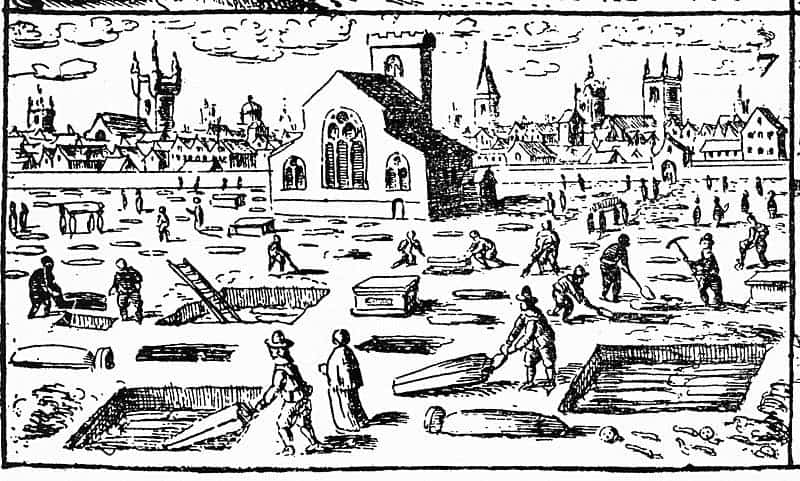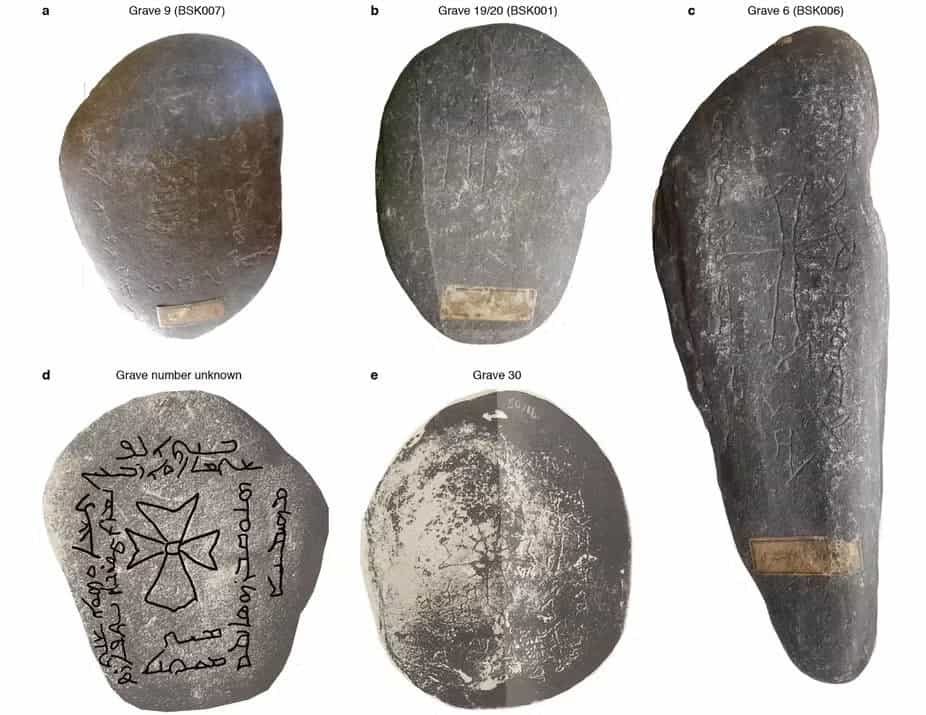
In October 1347, twelve Genovese trading ships docked at the Sicilian port of Messina after a long journey across the Black Sea. The ships brought many exotic wares and goods, but also a cursed gift. Most of the sailors were found dead, and the few who could muster the strength to sail to port were gravely ill. Messina townfolk quickly came to their rescue and were shocked by what they saw. The sick sailors were gravely delirious and their bodies were covered in black boils that oozed pus and blood. Within a week, the locals were to experience first-hand what this sickness felt like — as would the rest of Europe. Within a couple of years, tens of millions of people were dead to the disease, which wiped out up to 60% of Eurasia’s population.
This was the Black Plague, also known as the Black Death, a type of bubonic plague caused by the bacterium Yersinia pestis. For centuries, the disease would outbreak, recede, then strike again in waves, keeping Europe and Asia in a state of constant terror until the late 19th century. The bacterium that causes the plague was spread by fleas and lice carried by rodents on every continent except Australia and Antarctica. It is by far the worst pandemic in human history. And to this day, the disease is not extinct. Thousands of cases are reported worldwide each year, most of which are in Africa, India, and Peru, but unlike the horrors of the Middle Ages, plague is easily treated nowadays using common antibiotics.
Yet although the Black Plague in Europe was spread from Messina, it must have come from somewhere else. But where?
This geographical origin has been a contentious mystery for decades, but a new study may have finally found it. Writing in the journal Nature, scientists reported how they used ancient DNA evidence to pinpoint the ancestral origin of the Black Plague to the Tien Shan Mountains near Chüy Valley, right on the northern border of Kyrgyzstan with Kazakhstan. This particular strain from this region is the direct ancestor to virtually all the modern plague strains still circulating in the world today.
The mystery of where the Black Death first appeared

Y. pestis has been infecting humans for thousands of years before any historical mention of it. In 2018, scientists at the Technical University of Denmark and the University of Copenhagen found a previously unknown strain of the plague which is nearly 5,000 years old inside a Stone Age limestone tomb in Sweden. In the sixth century, one of the deadliest recorded pandemics was the Plague of Justinian which ravaged the remnants of the Roman Empire and the rest of Europe.
However, these early plagues were different from the Black Plague. The strain responsible for the Black Plague would appear much later, due to some freak mutation. But where exactly did this mutation happen?
Scientists have long suspected that Black Plague may have first appeared in the Chüy Valley ever since the late 19th century. That’s because they found two cemeteries in the area with an unusually high number of tombs, many of which were inscribed with dates ranging between 1338 and 1339, which predates the start of the plague pandemic in Europe by almost a decade. Another important clue is that some of the tombstones also mention the cause of death, mawtānā, which in the local Syriac language means “pestilence”.
“That brought it to my attention because it wasn’t just any year,” Dr. Philip Slavin of the University of Stirling in Scotland told the NY Times. It was 1338, “just seven or eight years before the Black Death came to Europe.”
“We can’t ask for much more than having tombstones with the year,” he said.
The researchers from the Max Planck Institutes for Evolutionary Anthropology and the Science of Human History and the University of Tübingen in Germany, along with colleagues from the University of Stirling in Scotland, took samples from the remains at the Kara-Djigach cemetery in Kyrgyzstan and sequenced their DNA looking for signs of plague.
The researchers analyzed tooth samples from seven bodies. Teeth are rich in blood vessels, which makes them the most likely place to find evidence of plague in an ancient body. Using modern genetic sequencing techniques, the team found traces of Y. pestis DNA in three of the samples, confirming that people in these people did, in fact, die of the plague years before the pandemic struck Europe.
This still didn't show that this is the earliest Black Plague -- but the next leg of the study would.
A different kind of Big Bang
By comparing the DNA samples of Y. pestis from Kyrgyzstan with the sequences of modern-day plague (from marmot populations) and historical plague (from the remains of ancient people who succumbed to the disease), the researchers constructed a family tree that showed that the Chüy Valley was different from the Black Death strain that steamrolled over Europe by only two mutations. Considering the early tombstones that predate European cases by several years, the obvious conclusion is that the Black Death originated in the Chüy Valley. This is the start of the 'Big Bang', as the authors of the new study call it. From there on, the plague likely spread through Eurasia through trade network.
However, this region isn't necessarily the true origin of the Black Plague. Perhaps it is more precise to say that the Chüy Valley is where we've found the earliest evidence of the Black Plague. The exact location where the first case of the plague appeared will likely never be known -- after all, we're still having trouble pinpointing where exactly COVID appeared, and this is 2022 -- but this is the closest scientists have come thus far.
"The publication in question has ended the centuries-old debate regarding the spatio-temporal origins of the Black Death. But what else do we take from it? To understand the phenomenon of emerging epidemic diseases, it is essential to have a big evolutionary picture. It is important to see how these diseases develop evolutionary and historically, and avoid treating different strains as isolated phenomena. To understand how the diseases develop and get transmitted, it is also crucial to consider the environmental and socioeconomic contexts," Savin wrote in an article for The Conversation.
"We also hope that our study will set an example to other historians and scientists that hope to answer such big questions – showing that a collaborative approach involving colleagues from different fields and bringing together different skills, methods, experiences and talents, is the future of historical and paleaogenetic research."


